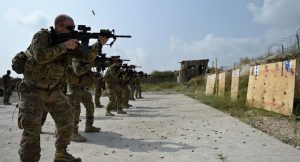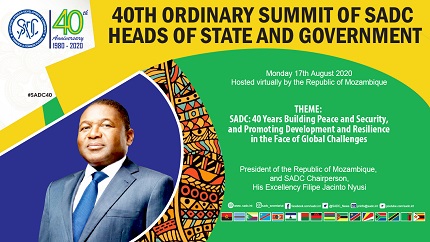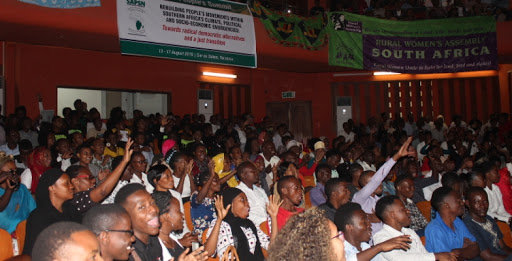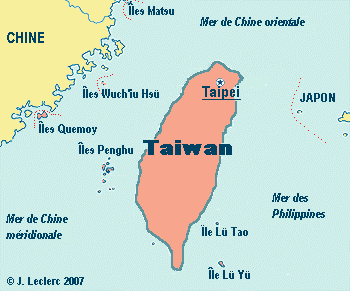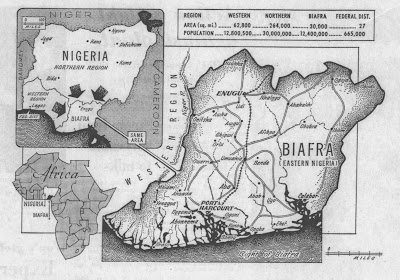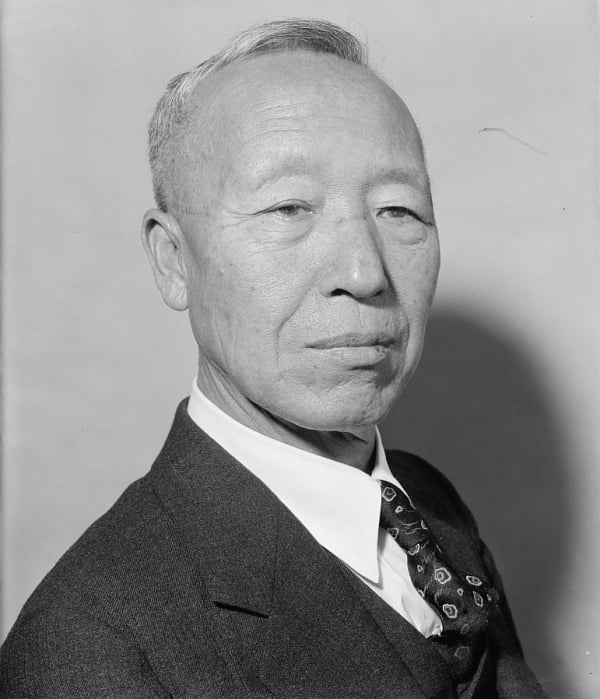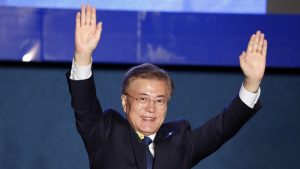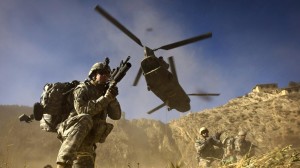How an “Act of God” Pandemic Is Destroying the West
September 3rd, 2020 by Prof Michael Hudson
The U.S. is Saving the Financial Sector, not the Economy
Before juxtaposing the U.S. and alternative responses to the corona virus’s economic effects, I would like to step back in time to show how the pandemic has revealed a deep underlying problem. We are seeing the consequences of Western societies painting themselves into a debt corner by their creditor-oriented philosophy of law. Neoliberal anti-government (or more accurately, anti-democratic) ideology has centralized social planning and state power in “the market,” meaning specifically the financial market on Wall Street and in other financial centers.
At issue is who will lose when employment and business activity are disrupted. Will it be creditors and landlords at the top of the economic scale, or debtors and renters at the bottom? This age-old confrontation over how to deal with the unpaid rents, mortgages and other debt service is at the heart of today’s virus pandemic as large and small businesses, farms, restaurants and neighborhood stores have fallen into arrears, leaving businesses and households – along with their employees who have no wage income – to pay these carrying charges that accrue each month.
This is an age-old problem. It was solved in the ancient Near East simply by annulling these debt and rent charges. But the West, shaped as it still is by the legacy of the Roman Empire, has left itself prone to the massive unemployment, business closedowns and resulting arrears for these basic costs of living and doing business.
Western civilization distinguishes itself from its Near Eastern predecessors in the way it has responded to “acts of God” that disrupt the means of support and leave debts in their wake. The United States has taken the lead in rejecting the path by which China, and even social democratic European nations have prevented the corona virus from causing widespread insolvency and polarizing their economies. The U.S. corona virus lockdown is turning rent and debt arrears into an opportunity to impoverish the indebted economy and transfer mortgaged property and its income to creditors.
There is no inherent material need for this fate to occur. But it seems so natural and even inevitable that, as Margaret Thatcher would say, There Is No Alternative.
But of course there is, and always has been. However, resilience in the face of economic disruption always has required a central authority to override “market forces” to restore economic balance from “above.”
Individualistic economies cannot do that. To the extent that they have a strong state, they are not democratic but oligarchic, controlled by the financial sector in its own interest, in tandem with its symbiotic real estate sector and monopolized infrastructure. That is why every successful society since the Bronze Age has been a mixed economy. The determining factor in whether or not an economic disruption leaves a crippled economy in its wake turns out to be whether its financial sector is a public utility or is privatized from the debt-strapped public domain as a means to enrich bankers and money-lenders at the expense of debtors and overall economic balance.
China is using an age-old policy used ever since Hammurabi and other Bronze Age rulers promoted economic resilience in the face of “acts of God.” Unless personal debts, rents and taxes that cannot be paid are annulled, the result will be widespread bankruptcy, impoverishment and homelessness. In contrast to America’s financialized economy, China has shown how natural it is for society simply to acknowledge that debts, rents, taxes and other carrying charges of living and doing business cannot resume until economic normalcy is able to resume.
Near Eastern protection of economic resilience in the face of Acts of God
Ancient societies had a different logic from those of modern capitalist economies. Their logic – and the Jewish Mosaic Law of Leviticus 25, as well as classical Greek and Roman advocates of democratic reform – was similar to modern socialism. The basic principle at work was to subordinate market relations to the needs of society at large, not to enrich a financial rentier class of creditors and absentee landowners. More specifically, the basic principle was to cancel debts that could not normally be paid, and prevent creditors from foreclosing on the land of debtors.
All economies operate on credit. In modern economies, bills for basic expenses are paid monthly or quarterly. Ancient economies operated on credit during the crop year, with payment falling due when the harvest was in – typically on the threshing floor. This cycle normally provided a flow of crops and corvée labor to the palace, and covered the cultivator’s spending during the crop year. Interest typically was owed only when payment was late.
But bad harvests, military conflict or simply the normal hardships of life frequently prevented this buildup of debt from being paid. Mesopotamian palaces had to decide who would bear the loss when drought, flooding, infestation, disease or military attack prevented the payment of debts, rents and taxes. Seeing that this was an unavoidable fact of life, rulers proclaimed amnesties for taxes and these various obligations incurred during the crop year. That saved smallholders from having to work off their debts in personal bondage to their creditors and ultimately to lose their land.
For these palatial economies, resilience meant stabilization of fiscal revenue. Letting private creditors (often officials in the palace’s own bureaucracy) demand payment out of future production threatened to deprive rulers of crop surpluses and other taxes, and corvée labor or even service in the military. But for thousands of years, Near Eastern rulers restored fiscal viability for their economies by writing down debts, not only in emergencies but more or less regularly to relieve the normal creeping backlog of debts.
These Clean Slates extended from Sumer and Babylonia in the 3rd millennium BC to classical antiquity, including the neo-Assyrian, neo-Babylonian and Persian Empires. They restored normal economic relations by rolling back the consequences of personal and agrarian debts – bondage to creditors, and loss of land and its crop yield. From the palace’s point of view as tax collector and seller of many key goods and services, the alternative would have been for debtors to owe their crops, labor and even liberty to their creditors, not to the palace. So cancelling debts to restore normalcy was simply pragmatic, not utopian idealism as was once thought.
The pedigree for “act-of-God” rules specifying what obligations need not be paid when serious disruptions occur goes back to the laws of Hammurabi c. 1750 BC. Their aim was to restore economic normalcy after major disruptions. §48 of Hammurabi’s laws proclaim a debt and tax amnesty for cultivators if Adad the Storm God had flooded their fields, or if their crops failed as a result of pests or drought. Crops owed as rent or fiscal payments were freed from having to be paid. So were consumer debts run up during the crop year, including tabs at the local ale house and advances or loans from individual creditors. The ale woman likewise was freed from having to pay for the ale she had received from palace or temples for sale during the crop year.
Whoever leased an animal that died by an act of god was freed from liability to its owner (§266). A typical such amnesty occurred if the lamb, ox or ass was eaten by a lion, or if an epidemic broke out. Likewise, traveling merchants who were robbed while on commercial business were cleared of liability if they swore an oath that they were not responsible for the loss (§103).
It was realized that hardship was so inevitable that debts tended to accrue even under normal conditions. Every ruler of Hammurabi’s dynasty proclaimed a Clean Slate cancelling personal agrarian debts (but left normal commercial business loans intact) upon taking the throne, and when military or other disruptions occurred during their reign. Hammurabi did this on four occasions.
Bronze Age rulers could not afford to let such bondage and concentration of property and wealth to become chronic. Labor was the scarcest resource, so a precondition for survival was to prevent creditors from using debt leverage to obtain the labor of debtors and appropriate their land. Rulers therefore acted to prevent creditors from becoming a wealthy class seeking gains by impoverishing debtors and taking crop yields and land for themselves.
By rejecting such alleviations of debts resulting from economic disruption, the U.S. economy is subjecting itself to depression, homelessness and economic polarization. It is saving stockholders and bondholders instead of the economy at large. That is because today’s rentier interests take the economic surplus in the form of debt service, holding labor and also corporate industry in bondage. Mortgage debt is the price of obtaining a home of one’s own. Student debt is the price of getting an education to get a job. Automobile debt is needed to buy a car to drive to the job, and credit-card debt must be run up to pay for living costs beyond what one is able to earn. This deep indebtedness makes workers afraid to go on strike or even to protect working conditions, because being fired is to lose the ability to pay debts and rents. So the rising debt overhead serves the business and financial sector by lowering wage levels while extracting more interest, financial fees, rent and insurance out of their take-home pay.
Debt deflation and the transition from finance capitalism to an Austerity Economy
By injecting $10 trillion into the financial markets (when Federal Reserve credit is added to U.S. Treasury allocation), the CARES act enabled the stock market to recover all of its 34 percent drop (as measured by the S&P 500 stocks) by June 9, even as the economy’s GDP was still plunging. The government’s new money creation was not spent to revive the real economy of production and consumption, but at least the financial One Percent was saved from loss. It was as if prosperity and living standards would somehow return to normal in a V-shaped recovery.
But what is “normal” these days? For 95 percent of the population, their share of GDP already had been falling ever since the Obama Depression began with the bank bailout in 2009, leaving an enormous bad-debt overhead in place. The economy’s long upswing since World War II was already grinding to an end as it struggled to carry its debt burden, rising housing costs, health care and related monthly “nut.”
This is not what was expected 75 years ago. World War II ended with families and businesses rife with savings and with little debt, as there had been little to buy during the wartime years. But ever since, each business cycle recovery has started with a higher ratio of debt to income, diverting more revenue from business, households and governments to pay banks and bondholders. This debt burden raises the economy’s cost of living and doing business, while leaving less wage income and profit to be spent on goods and services.
The virus pandemic has merely acted as a catalyst ending to the long postwar boom. Yet even as the U.S. and other Western economies begin to buckle under their debt overhead, little thought has been given to how to extricate them from the debts and defaults that have accelerated as a result of the broad economic disruption.
The “business as usual” approach is to let creditors foreclose and draw all the income and wealth over subsistence needs into their own hands. Economies have reached the point where debts can be paid only by shrinking production and consumption, leaving them as strapped as Greece has been since 2015. Rejecting debt writedowns to restore social balance was implanted at the outset of modern Western civilization. Ever since Roman times it has become normal for creditors to use social misfortune as an opportunity to gain property and income at the expense of families falling into debt. Blocking the emergence of democratic civic regimes empowered to protect debtors, creditor interests have promoted laws that force debtors to lose their land or other means of livelihood to foreclosing creditors or sell it under distress conditions and have to work off their debts.
In times of a general economic disruption, giving priority to creditor claims leads to widespread bankruptcy. Yet it violates most peoples’ ideas of fairness and distributive justice to evict debtors from their homes and take whatever property they have if they cannot pay their rent arrears and other charges that have accrued through no fault of their own. Bankruptcy proceedings will force many businesses and farms to forfeit what they have invested to much wealthier buyers. Many small businesses, especially in urban minority neighborhoods, will see years of saving and investment wiped out. The lockdown also forces U.S. cities and states to cope with plunging sales- and income-tax revenue by slashing social services and depleting their pension funds savings to pay bondholders. Balancing their budgets by privatizing hitherto public services will create monopoly rents and new corporate empires.
These outcomes are not necessary. They also are inequitable, and instead of being a survival of the fittest and most efficient economic solutions, they are a victory for the most successful predatory operators in society. Yet such results are the product of a long-pedigreed legal and financial philosophy promoted by banks and bondholders, landlords and insurance companies to reject economy-wide debt relief. They depict writing down debts and rents owed to them as unthinkable. Banks claim that forgiving personal and business rents would lead absentee landlords to default on their mortgages, threatening bank solvency. Insurance companies claim that to make their policy holders whole would bankrupt them. So something has to give: either the population’s broad economic interests, or the vested interests insisting that labor, industry and the government must bear the cost of arrears that have built up during the economic shutdown.
As in oligarchic Rome, financial interests in today’s world have gained control of governments and captured the political and regulatory agencies, leaving democratic reformers powerless to suspend debt service, rent arrears, evictions and depression. The West is becoming a highly centrally planned economy, but its planning center is Wall Street, not Washington or state and local governments.
Rising real estate arrears prompt a mortgage bailout
Canada and many European governments are subsidizing businesses to pay up to 80 percent of employee wages even though many must stay home. But for the 40 million Americans who haven’t been employed during the closedown, the prospect is for homelessness and desperation. Already before the crisis about half of Americans reported that they were living paycheck to paycheck and could not raise $400 in an emergency. When the paychecks stopped, rents could not be paid, nor could other normal monthly living expenses.
America is seeing the end of the home ownership boom that endowed its middle class with property steadily rising in price. For buyers, the price was rising mortgage debt, as bank credit was the major factor in raising property prices – a home is worth however much a bank will lend against it. For non-whites, to be sure, neighborhoods were redlined against racial minorities. By the early 2000s, banks began to make loans to black and Hispanic buyers, but usually at extortionately high interest rates and stiffer debt terms. America’s white home buyers now face a fate similar to that which they have long imposed on minorities: Debt-inflated purchase prices for homes so high that they leave buyers strapped by mortgage and compulsory insurance payments, alongside declining public services in their neighborhoods.
When mortgages can’t be paid, foreclosures follow. That causes declines in the proportion of Americans that own their own homes. That home ownership rate already had dropped from about 58 percent in 2008 to about 51 percent at the start of 2020. Since the 2008 mortgage-fraud crisis and President Obama’s mass foreclosure program that hit minorities and low-income buyers especially hard, a more landlord-ridden economy has emerged as a result of foreclosed properties and companies bought by speculators and vast absentee-owner companies like Blackstone.
Many businesses that closed down did not pay the landlords. Realizing that if they are held responsible for paying full rents that accrued during the shutdown, it would take them over a year to make up the payment, leaving no net earnings for their efforts, the incentive was to close. That was especially the case for restaurants with compulsory limited “distance” seating and other stores obliged to restrict the density of their customers. Many restaurants and other neighborhood stores decided to go out of business. Some 19 percent of mortgage loans had fallen into arrears already by May, along with about 10 percent of retail stores.
The commercial real estate sector owes $2.4 trillion in mortgage debt. About 40 percent of tenants did not pay their rents for March, April and May, from restaurants and storefronts to large national retail markets. A moratorium on evictions put them off until August or September 2020. But in the interim, quarterly state and local property taxes were due in June, which also was when the annual federal income-tax payment was owed for the year 2019, having been postponed from April in the face of the shutdown.
The prospective break in the chain of payments of landlords to their banks may be bailed out by the Federal Reserve, but nobody can come up with a scenario whereby the debts owed by non-elites can be paid out of their own resources, any more than they were rescued from the junk-mortgage frauds that left over-mortgaged homes (mainly for low-income victims) in the wake of Obama’s decision to support the banks and mortgage brokers instead of their victims. In fact, it takes a radical scenario to see how state and local debt can be paid as public budgets are thrown into limbo by the virus pandemic.
The fiscal squeeze forces governments to privatize public services and assets
Since 1945, the normal Keynesian response to an economic slowdown has been for governments to run budget deficits to revive the economy and employment. But that can’t happen in the wake of the 2020 pandemic. For one thing, tax revenue is falling. Governments can create domestic money, of course, but the U.S. government quickly ran up a $2 trillion deficit by June 2020 simply to support Wall Street’s financial and corporate markets, leaving a fiscal squeeze when it came to public spending into the real economy. Many U.S. states and cities have laws obliging them to balance their budgets. So public spending into the real economy (instead of just into the financial and corporate markets) had to be cut back.
U.S. states and localities are facing a huge tax shortfall that is forcing them to cut back basic social services and infrastructure. Sales taxes from restaurants and hotels, income taxes, and property taxes from landlords not receiving rents are mounting from millions to billions. New York City mayor de Blasio (image on the left) has warned that schools, the police and public transportation may have to be cut back unless the city is given $7 billion. The CARES act passed by the Democratic Party in control of the House of Representatives made no attempt to allocate a single dollar to make up the widening fiscal gap. As for the Trump administration, it was unwilling to give money to states voting Democratic in the presidential or governorship elections.
The irony is that just at the time when a pandemic calls for public health care, political pressure for that abruptly stopped. Logically, it might have been expected the virus to have become a major catalyst for single-payer public health care, not least to prevent a wave of personal bankruptcy resulting from high medical bills. But hopes were dashed when the leading torch bearer for socialized medicine, Senator Bernie Sanders, threw his support behind Joe Biden and other opponents for the presidential nomination instead of focusing the primary elections on what the future of the Democratic Party would be. It decided to focus the 2020 U.S. election merely on the personality of which candidate would impose neoliberal policy: Republican Donald Trump, or his opponent running simply on a platform of “I am not Trump.”
Both candidates – and indeed, both parties behind them –sought to downsize government and privatize as much of the public sector as possible, leaving administration to financial managers. Past government policy would have restored prosperity by public spending programs to rebuild the roads and bridges, trains and subways that have fallen apart. But the fiscal squeeze caused by the economic shutdown has created pressure to Thatcherize America’s crumbling transportation and urban infrastructure – and also to sell off land and public enterprises, basic urban health, schools – and at the national level, the post office. Fiscal budgets are to be balanced by selling off this infrastructure, in lucrative Public-Private Partnerships (PPPs) with financial firms.
The neoliberal rent-extractive plan is for private capital to buy monopoly rights to repair the nation’s bridges by turning them into toll bridges, to repair the nation’s roads and highways by making the toll roads, to repair sewer systems by privatizing them. Schools, prisons, hospitals and other traditionally public functions are set to become lucrative consulting opportunities on the road to privatization. Even the police are to be privately owned security-guard agencies and managed for profit – on terms that will provide interest and capital gains for the financial sector. It is a New Enclosures movement seeking monopoly rent much as landlords extract land rent.
Having given $10 trillion dollars to support financial and mortgage markets, neoliberals in both the Republican and Democratic parties announced that the government had created so large a budget deficit as a result of bailing out the banking and landlord class that it lacked any more room for money creation for actual social spending programs. Republican Senate leader Mitch McConnell advised states to solve their budget squeeze by raiding their pension funds to pay their bondholders.
For many decades, public employees accepted low wage growth in exchange for pensions. Their patient choice was to defer demands for wage increases in order to secure good pensions for their retirement. But now that they have worked at stagnant wages for many years, the money ostensibly saved for their pensions is to be given to bondholders. Likewise at the federal level, pressure was renewed by both parties to cut back Social Security, Medicare and Medicaid, with Obama’s 2010 Simpson-Bowles Commission on Fiscal Responsibility and Reform to reduce the deficit at the expense of retirees and the poor.
In sum, money is being created to fuel the financial sector and its stock and bond markets, not to increase the economy’s solvency, employment and living standards. The corona virus did not create this shift, but it catalyzed and accelerated the power grab, not least by pushing public-sector budgets into crisis.
It doesn’t have to be this way
Every successful economy has been a mixed public/private economy with checks on the financial sector’s power to indebt society in ways that impoverish it. Always at issue, however, is who will control the government. As American and European industry becomes more debt ridden, will they be oligarchic or democratic?
A socialist government such as China’s can keep its industry going simply by simply writing down debts when they can’t be paid without forcing a closedown and bankruptcy and loss of assets and employment. The world thus has two options: a basically productive public financial system in China, or a predatory financial system in the United States.
China can recover financially and fiscally from the viral disruption because most debts ultimately are owned to the government-based banking system. Money can be created to finance the material economy, labor and industry, construction and agriculture. When a company is unable to pay its bills and rent, the government doesn’t stand by and let it be closed down and sold at a distressed price to a vulture investor.
China has an option that Western economies do not: It is in a position to do what Hammurabi and other ancient Near Eastern palatial economies did for thousands of years – write down debts so as to keep the economy resilient and functioning. It can suspend scheduled debt service, taxes, rents and public fees from having to be paid by troubled areas of its economy, because China’s government is the ultimate creditor. It need not contend with politically powerful bankers who insist that the economy at large must lose, not themselves. The government can write down the debt to keep companies in business, and also their employees. That’s what socialist governments do.
The underlying problem is finance capitalism. Its roots lie at the heart of Western civilization itself, rejecting the “circular time” permitting economic renewal by Clean Slates in favor of “linear time” in which debts are permanent and irreversible, without public oversight to manage finance and credit in the economy’s overall long-term interest.
It often is easier to get rich in such times of disaster and need than in times of normal prosperity. While the U.S. economy polarizes between creditors and debtors, the stock market anticipates fortunes being made quickly from the insolvency of business with assets and property to be grabbed. Coupled with the Federal Reserve’s credit creation to support the financial and real estate markets, asset prices are soaring (as of June 2020) for companies that expect to get even richer from the widespread distress to come in autumn 2020 when evictions and foreclosures are scheduled to begin again.
In that respect, the corona virus’s effect has been to help defeat the financial sector’s enemy – governments strong enough to regulate it. The fiscal squeeze resulting from widespread unemployment, business closedowns, rent and tax arrears is being seized upon as a means of dismantling and privatizing government at the federal, state and local levels, at the expense of the citizenry at large.
*
Note to readers: please click the share buttons above or below. Forward this article to your email lists. Crosspost on your blog site, internet forums. etc.
Featured image is from the author



